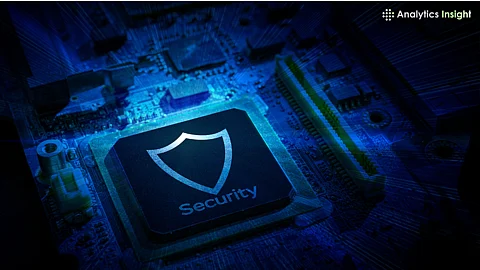

Deepfakes increasingly blur reality, enabling sophisticated scams, financial fraud, and the spread of dangerous misinformation.
They severely erode digital trust, threatening authentication systems, democratic processes, and online interactions globally.
Countermeasures include AI detection tools, blockchain for provenance, and crucial public digital literacy to verify content.
With the advent of digitization, the divide between actuality and fictitiousness has wandered into a blur. Deepfakes, or those AI-generated synthetic media that manipulate or completely fabricate images, audio, and video, have graduated from being amusing nuisances to a serious concern.
The faster their evolution and the wider the uses, the graver the consequences posed to online security, reputation, political stability, and digital trust.
Deepfakes derive their genesis from deep learning technologies, which train algorithms to fabricate ever more realistic content. What began as a kind of tech trick, face-swapping celebrities in movies, is now well on its way to becoming a fearsome and banal tool.
Various applications and platforms have democratized deepfake creation, allowing anyone to make deepfakes using just their smartphones. This has lowered the entry barrier into the world of deepfakes.
Initially considered a tool for entertainment and harmless humor, the sinister uses of deepfakes cannot be discounted. They are impersonating people for scams and even social engineering businesses in social engineering attacks.
Trust is just about the heart of digital interaction, the person on the other side had that video call, the news piece is the sheer truth, and the source is verified for the strange email. Deepfakes threaten this trust. If we can't believe anything we see or hear online, then how can we confidently use digital media?
More and more high-profile deepfake instances are causing alarm. A deepfake video of a political leader announcing war briefly caused a frenzy in 2023 before being debunked. In the corporate world, fraudsters used deepfaked audio of a CEO to authorize a fraudulent transfer. So, these are cases that show the devastating impact one fake shot can have.
Such an erosion of trust affects individuals and businesses and also affects democratic institutions: misleading political deepfakes could be used for intimidating or manipulating voters and inciting unrest, especially in societies where digital literacy is still developing.
Deepfakes have currently become cybercriminals’ weapon of choice in their acts of crime. What were previously simple phishing attacks are fast getting reinvented into 'vishin' (voice phishing), wherein synthetic media is deployed to outwit even the most cautious users.
A voice message coming from the boss herself would be asking for confidential data, or a video message would come from a fake colleague requesting an urgent payment. These synthetic clips are so realistic that timely detection is crucial to identify and respond to them effectively.
On the other hand, these deepfakes are used by spies to steal data. AI-generated media poses a significant threat. It can enable criminals to bypass biometric security systems and deceive human authentication checks, gaining unauthorized access.
As much of identity verification is shifted to voice or face recognition, deepfakes are therefore a serious threat to authentication methods.
Also Read: Deepfake Defense Shifts Focus to Real-Time Trust in AI Era
Tech companies, governments, and researchers are working hard to deter deepfake threats. AI-driven detection tools check inconsistencies in lighting, facial movements, blinking patterns, and audio sync issues that tend to be signs of synthetic tampering. Microsoft's Video Authenticator and tools from startups like Deeptrace are aiding in flagging suspect content.
Blockchain is also being studied to serve as a means of verifying authenticity. By registering original media content on a distributed ledger, any form of manipulation would be traceable. Initiatives such as Project Origin and the Content Authenticity Initiative are working to standardize provenance certification for digital content.
Nonetheless, detection tools are often one step behind the crafting tools in sophistication. It really is a cat-and-mouse game where deepfake creators often retain the advantage for now.
Governments are getting into legislation against the malicious use of deepfakes. Certain countries have criminalized synthetic media used for non-consensual deepfake porn and misinformation campaigns. Certain states in the U.S., including California and Texas, have laws specifically targeting deepfake misuse, mainly concerning elections and personal impersonation.
But legislation, in itself, can't meaningfully stem the tide. Mass awareness and digital literacy become the real defenses. People must negotiate to verify sources and hold media with increasingly sensational claims tightly. Professionals and the public sector need to be trained about deepfake threats as part of cybersecurity.
Deepfakes have ceased to be something far on the horizon; now they pose an immediate threat to cyberspace security and digital trust. The complexity and accessibility of synthetic media increase simultaneously with the growing range we must look at to defend ourselves.
Technology, regulation, and education may do well to shrink this threat; after all, the biggest protection remains an intelligent and aware population. Digital trust in the face of deepfakes requires careful defense and watchfulness, as well as the application of creative innovations. Above all, it demands a strong collective commitment to truth in the virtual world.
Also Read: Can We Trust AI with Everything? The Dark Side of Over-Reliance
